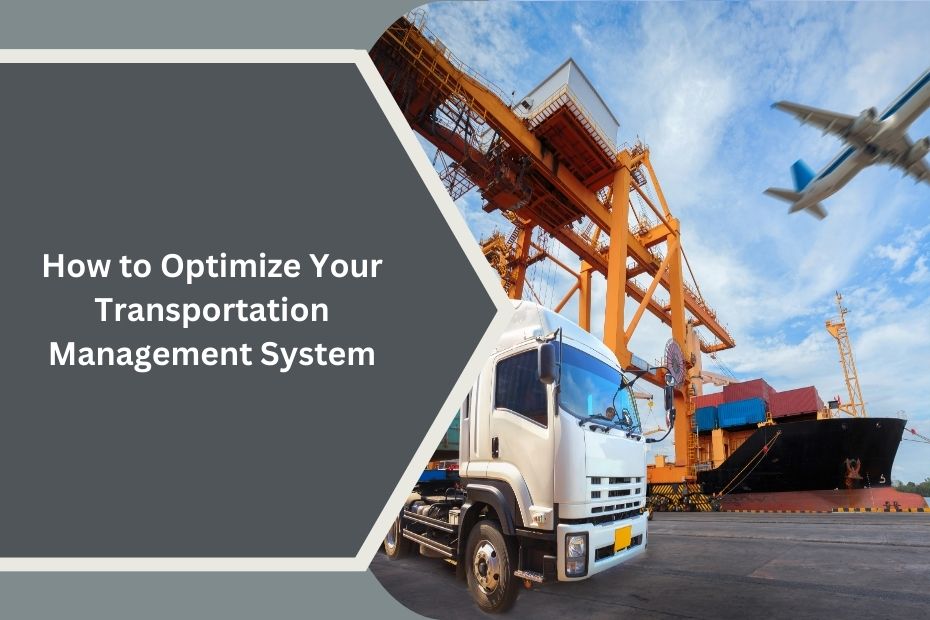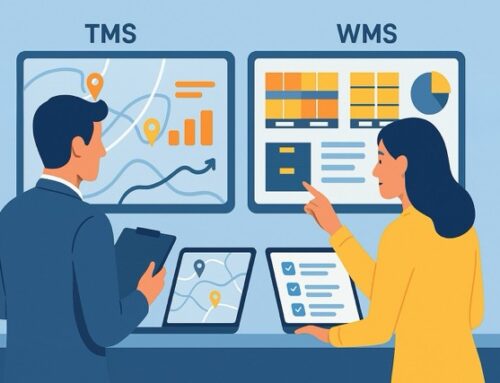In logistics, a Transportation Management System (TMS) is indispensable for achieving efficiency and cost savings. As a vital tool for planning, executing, and optimizing transportation operations, a well-implemented TMS can streamline workflows, provide valuable data insights, and improve customer satisfaction. In this article, I’ll share key strategies that supply chain professionals can use to get the most out of their TMS, ensuring smoother and more cost-effective operations.
Prioritize Real-Time Tracking and Visibility
One of the primary strengths of a TMS is its ability to provide real-time tracking, giving you a clear view of shipment statuses, potential delays, and delivery times. I’ve seen firsthand how visibility can be a game-changer, especially when managing a complex logistics network with multiple carriers. By enabling real-time tracking, managers can make proactive adjustments to routes, handle exceptions quickly, and update customers accurately.
This visibility also helps in building trust with clients by providing up-to-date information about their shipments. To optimize this function, ensure that your TMS is fully integrated with GPS and Internet of Things (IoT) sensors. This combination allows you to monitor every movement, from warehouse dispatch to final delivery, reducing the risk of miscommunication or delays.
Use Data-Driven Insights for Better Route Optimization
A well-optimized TMS uses data to suggest the most efficient routes for shipments, helping reduce fuel consumption and delivery times. Leveraging route optimization saves money and ensures goods are delivered on time, enhancing overall service levels. When a TMS evaluates traffic patterns, historical data, and delivery windows, it’s easier to make adjustments based on real-world conditions, such as avoiding high-traffic routes or construction zones.
Analyze the data from previous shipments to identify bottlenecks and optimize for future routes. By constantly refining routes based on data-driven insights, your TMS can offer significant cost savings and a faster delivery network. If your TMS supports machine learning, it will continually improve its route suggestions over time, making your transportation operations even more efficient.
Evaluate Carrier Performance Consistently
The performance of carriers directly impacts both cost and customer satisfaction, which makes tracking their performance through your TMS crucial. Look for metrics such as on-time delivery rates, capacity usage, and communication quality. I recommend setting up carrier scorecards within your TMS to rank each provider based on these key metrics. This information enables you to negotiate better contracts and ensure high service standards.
Regularly reviewing carrier performance gives you the insights to identify which carriers offer the best value and which ones may be costing you in terms of delays or poor service. A strong TMS should allow you to compare carriers easily and make informed decisions on which to use for future shipments, ultimately improving both reliability and cost efficiency.
Automate Key Workflows to Reduce Manual Errors
One of the major benefits of a TMS is its ability to automate repetitive tasks, reducing the need for manual intervention and decreasing the risk of human error. Tasks such as scheduling, routing, and billing can be automated, allowing your team to focus on more strategic activities. I’ve noticed that automation speeds up these processes and enhances accuracy, which is especially important in billing and compliance.
Set up automation for tasks like route scheduling, shipment notifications, and freight audit processes. Automating these aspects minimizes delays and inconsistencies while ensuring that every shipment follows an established protocol. This approach also allows managers to monitor shipments without the administrative burden, enabling smoother, faster workflows that benefit the entire supply chain.
Leverage Advanced Analytics for Predictive Planning
Advanced analytics provide insights into trends and patterns that help forecast demand, plan capacity, and anticipate disruptions. Many TMS solutions now come with predictive analytics capabilities, using historical data to predict future demand and identify potential risks. In my experience, companies that actively use predictive analytics within their TMS are better equipped to handle fluctuations in demand and seasonality.
Utilizing advanced analytics helps in planning staffing, warehouse space, and carrier resources ahead of time, minimizing costly disruptions. It’s especially useful for peak seasons when demand surges, allowing you to allocate resources strategically. By planning proactively, you can avoid last-minute bottlenecks and ensure that your TMS is supporting seamless operations, even during busy periods.
Optimize Inventory with Integrated TMS-WMS Solutions
Integrating your TMS with a Warehouse Management System (WMS) allows for smoother coordination between warehousing and transportation. When inventory and transportation are in sync, goods can be moved more efficiently from storage to shipment, reducing delays and improving delivery times. This integration also provides better control over inventory levels, as it connects inbound and outbound logistics seamlessly.
With an integrated TMS-WMS system, your TMS can automatically update with real-time inventory levels, ensuring accurate tracking and stock availability. This integration allows managers to plan shipments based on stock levels, making sure that there are no shipment delays due to unavailable stock. The result is a streamlined flow of goods from warehouse to customer, with fewer disruptions and better overall service.
Improve Customer Communication with TMS Notifications
Keeping customers informed is crucial for building trust and loyalty, and a TMS with customer notification capabilities is invaluable for this. Your TMS should allow for automated notifications, updating clients on shipment statuses, estimated arrival times, and any delays. In my experience, customers appreciate proactive communication, and it often leads to higher satisfaction.
A well-optimized TMS should offer configurable notifications, enabling you to tailor messages to your customers’ needs. These notifications keep clients informed and reduce the need for follow-up inquiries, saving time for your customer service team. When customers feel they’re kept in the loop, they’re more likely to view your company as reliable and professional.
Regularly Review and Update Your TMS Strategy
Technology and business needs are always evolving, so it’s essential to review and update your TMS strategy regularly. Regular assessments help ensure that your TMS continues to align with your business goals. I recommend conducting quarterly reviews of TMS performance metrics, automation workflows, and data integration capabilities to identify any areas for improvement.
Keeping your TMS up-to-date also includes software updates and considering enhancements as your business grows. As your company’s transportation needs expand, a flexible TMS allows for scaling and adapting to changes in volume, regulatory requirements, or service demands. Regular evaluations keep your system performing optimally and allow you to leverage the latest technological advancements for maximum efficiency.
Essential Tips for Optimizing Your Transportation Management System
- Enable Real-Time Tracking: Improve visibility and proactive management.
- Leverage Route Optimization: Reduce costs with efficient routing.
- Monitor Carrier Performance: Ensure reliability with regular evaluations.
- Automate Workflows: Minimize errors and speed up processes.
- Use Predictive Analytics: Anticipate demand and reduce disruptions.
- Integrate with WMS: Improve coordination between inventory and shipping.
- Customer Notifications: Enhance satisfaction through proactive updates.
In Conclusion
Optimizing your Transportation Management System is about more than just software – it’s about building a seamless, efficient process that meets the demands of modern logistics. A well-optimized TMS provides real-time tracking, supports better decision-making through data insights, and improves customer service by keeping clients informed at every stage. By implementing these strategies—such as prioritizing route optimization, automating workflows, and leveraging predictive analytics—you can transform your TMS into a powerful tool that drives efficiency and enhances customer satisfaction. With continuous improvement and strategic adjustments, your TMS can help you stay competitive and deliver reliable results in a fast-paced supply chain environment.









